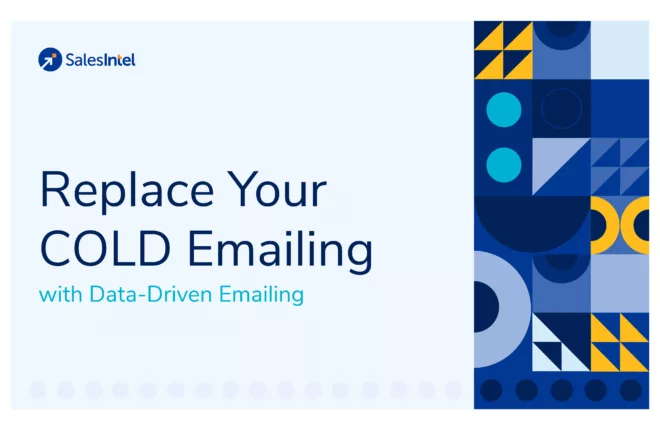As a business owner, you put your mind and soul into building a loyal customer base. You may not be a professional marketer, but it doesn’t take a genius to understand that you need to keep clients engaged for your business to stay afloat.
You spend months collecting customer information and crafting creative email marketing campaigns to keep them updated on new offers, only to realize that your emails don’t even reach a massive chunk of your email database! It’s the last thing any entrepreneur wants to learn.
When emails bounce, it’s a lose-lose situation for both you and your client. In this article, we’ll talk about why emails bounce, what a high bounce rate means for your business, and the best-proven tips to help reduce your email bounce rate.
What is Email Bounce Rate?
In simple terms, your email bounce rate is the percentage of emails that ‘bounce’ back – i.e., the emails that don’t get delivered to the recipient. Ideally, every business should aim at a low bounce rate, which means that your emails reach where they’re supposed to.
A simple formula to calculate your bounce rate is –
(Number of bounces / Number of delivered emails) x 100 = email bounce rate
There are a few different reasons why emails bounce, but primarily they fall under two main categories.
Soft Bounce – This happens when your emails bounce due to a temporary problem like a flooded inbox.
Hard Bounce – when your emails hard bounce, it’s usually due to a more permanent issue like the recipient changing their email address or leaving it inactive for an extended period.
Why Do My Emails Bounce?
If your email bounce rate rises, don’t panic and jump to the worst conclusions. It’s usually not as bad as you think. Some of the many reasons why emails bounce are –
- The recipient’s inbox is full
- The recipient no longer uses their account
- The account has been disabled
- There are server issues
- The recipient has blocked you from their email list.
Most of the time, it’s because of an issue that can be resolved quickly. So instead of dwelling on why it happened, a better solution would be to think of ways to fix and reduce your bounce rate.
Why A Low Bounce Rate Matters
Now, you might be wondering, even if a few emails bounce back, there are still some that do get delivered, so shouldn’t you just focus on those?
However, it’s essential to understand that a high bounce rate affects your emails’ overall delivery and quality. For that, it’s necessary to understand the concept of sender reputation. The more emails bounce back, the lower your sender’s reputation.
With a low sender’s reputation, there is a higher chance your emails go straight to the spam folder – where no sender wants their emails to land up.
So, it’s essential that your email list is clean, regularly updated, and consists of only active addresses. Generally, you should keep your email bounce back between 2-5%, depending on your industry.
Tips To Reduce Your Bounce Rate
Now that you understand what bounce rates are and why they’re so crucial to your business, we can look at things you can do from your end to ensure you keep your bounce rate as low as possible.
1. Regularly Update Your Email List
It’s only natural that people lose interest in a product or a brand over time. And it’s also possible that people give you a backup email address that they never really open. Having these addresses on your list that don’t engage with your emails can increase the bounce rate.
So, in the same way you update your mailing list with new addresses, it’s also important to regularly keep a tab on which recipients aren’t active on their email ID or haven’t opened your emails for a while.
Before removing them from your list, you can send them a last mail asking if they are still interested in receiving emails from your business. Sometimes, people may simply forget to unsubscribe from a mailing list, which could serve as a reminder. You can hire a virtual assistant to ensure your mailing list is clean and regularly updated.
2. Don’t Make Your Emails Look Like Spam.
Did you know that 53% of emails sent are spam?
Because of this, specific metrics deem which emails are automatically sent to the spam folder, even if your email has nothing to do with spam. What are they?
Firstly, some keywords are frequently put in the spam category. For example, using words like – Sale, Offer, Discount, Free, and Bonus. Using these words increases your chance of ending up in the spam folder.
Secondly, images are essential. You shouldn’t use images that are too small or too large.
The trick is to identify these red areas and do your part to ensure you don’t trigger the system into segmenting your emails to the spam folder.
3. Be Consistent
The only reason your client trusted you with their email information is that they’re genuinely interested in your products. Your responsibility is to ensure that you do your part to engage with them regularly.
If you only send an email once in a few months, your audience will likely forget all about you and not open the emails you send. Once too many go unopened, you’re likely sent straight to the spam folder.
However, if you send out regular emails (that add value to your customers), they are more likely to become a part of your client’s routine. They are more likely to open and even look forward to receiving your emails.
As a business owner, we understand that you might now have the time to write email marketing campaigns daily. Hiring a social media assistant is an excellent solution for entrepreneurs to stay consistent.
4. Try A/B Testing
You cater to a broad audience, and one can never be sure what types of emails work best. The only way to get better at it is to keep trying and experimenting with different formats and styles.
One of the most effective forms of testing is A/B testing, where you send out two different formats of emails and see which performs better.
With emails, there are two parameters you can experiment with – the subject line and the main context. So, try and test different combinations until you find the format that resonates best with your mailing list. A/B testing can also help increase your email open rates as well.
5. Use a Captcha System
You will be surprised to know that a massive chunk of your email list is bots and not actual humans. Unfortunately, this is very common for sites that don’t have a secure signup system. But don’t worry, there’s a straightforward solution to this.
All you have to do is have a solid captcha system that makes it difficult for bots to sign up to your mailing list. That will make sure only real people sign up for your website and make your job of cleaning your mailing list easier, as we mentioned earlier in our first point.
6. Identify The Right Contact Base
A lot of the time, emails bounce because you are not sending them to the right audience. An email marketing campaign is only successful if the recipients engage with it, and that can only happen if you send them to people who will be interested.
How to build the correct database?
Apart from relying on your customer base, you should explore other options to grow your contacts list. For example, SalesIntel is an excellent option for finding your ideal client base for businesses. SalesIntel will direct you to ideal customers and will provide contact information. You can grow your mailing list, get more leads, and improve engagement.
7. Ask Your Subscribers To Inform You Of Changes
As discussed earlier, the main reason emails bounce is simple – the recipients don’t use that account anymore.
Naturally, you can’t expect everyone to use the same email ID forever.
To avoid losing your customers, you can include profile update forms in your email campaigns and request your subscribers to update their information if they plan to change their addresses or are not using that account anymore. That is another excellent way to ensure engagement and keep your mailing list updated only with active users.
8. Use a Double Opt-In
Like a captcha, a double opt-in is a two-step verification system that ensures that only interested people sign up for your mailing list.
It works because after subscribing, the recipients get an email asking them to confirm their subscription, and only then will they get permanently added to your system.
We get it, this might seem like an extra step, but it will guarantee that only people who are genuinely interested will be added to your recipient list.
Your Email Bounce Rate Matters
If you haven’t yet been paying attention to your email bounce rate, it’s not too late to start now. While often overlooked, your bounce rate is one of the defining factors of your email marketing success. We hope you found this article helpful and that you understand the value of bounce rates in your email marketing strategy.
Swapna is a content writer for Wishup, with a background in Media and Mass Communication.




